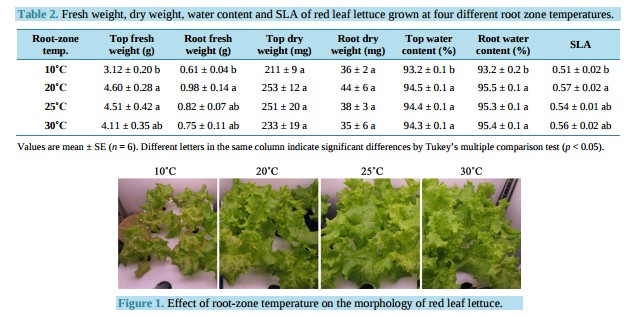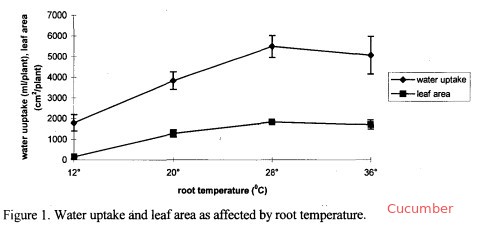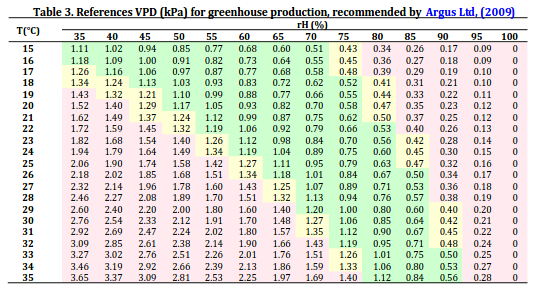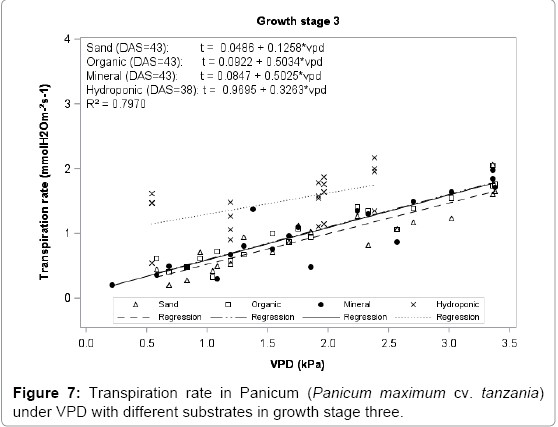What is the ideal nutrient solution temperature in hydroponics?
One of the simplest variables that can make a substantial difference in crop yields in hydroponics is the temperature of the nutrient solution. Nutrient absorption by plants is mainly controlled by chemical processes within their roots and the efficacy of these processes is determined in an important part by the temperature the roots are subjected to. Since plants don’t have a mechanism for active temperature regulation they just react to changes in temperature in order to best adapt to the environment that surrounds them. Today I will be talking about the optimum solution temperature in hydroponics, what influences this value and what factors we must consider when deciding what temperature to use in our hydroponic system.
–

–
Solution temperature affects several important variables. Oxygen solubility changes as a function of temperature – decreasing as temperature increases – so as you increase the temperature the availability of oxygen to plant roots starts decreasing. As you increase temperature however the speed of the chemical reactions in plant roots increases, so there is an increase in respiration rates as temperature increases. The ideal temperature is therefore always a compromise between this decrease in oxygen availability and the increase in metabolic rate that is given by higher temperatures. For almost all commercially grown plant species optimum solution temperatures will be in the 15-30°C (59-86F) range due to this reason.
However there is no rule of thumb for optimum solution temperature selection in hydroponics. It should be clear that since different plants evolved across different conditions some of them perform better at lower temperatures and some others do better at higher temperatures. We know for example that the optimum nutrient solution temperature for potatoes is in the 20-25°C range (see here) while the optimum temperature for plants like cucumbers is higher, at 28°C (see here). For some plants like onions the best solution temperature can actually be a bit higher, even in the 26-30°C range (see here). Others like lettuce and baby leaf crops actually prefer much lower temperatures, with optimum results near 20°C (see here and here).
–

–
It is then clear that picking a random number between 15-30°C is not enough, a careful study of the plant specie being grown has to be carried out in order to select an adequate temperature. It is also important to note that higher temperature choices do not come without problems. We know for example that pythium and other infections are associated with increases in temperature since pathogen metabolism is also enhanced under warmer conditions (see here and here). This shows how even though the optimum temperature for tropical flowering plants is usually in the 25-30°C range, it is usually not common to see optimum results at these temperatures due to the potentially higher prevalence of diseases. This is most probably why growers usually go with a lower temperature in the 20-25°C to avoid risking diseases at a higher temperature.
If you want to try higher temperatures it is therefore better to go with sterile type hydroponic systems where microbes don’t play an important role and to implement measures – such as silicate additions to the nutrient solution, UV filtration and constant oxygenation – to ensure that disease prevalence is as low as possible. Also avoid adding any source of organic carbon (like sugars) as these can play an important role in feeding incoming pathogens. Big gains can be obtained with a better solution temperature control, provided that diseases are controlled and a temperature adequate for the plant being grown is selected.

